Hey there! If you're looking to send out an engagement letter update, you're in the right place. Crafting a clear and concise update can help strengthen your relationship with clients and ensure everyone is on the same page. Curious about how to structure your letter and what key elements to include? Keep reading for tips and a sample template to get you started!

Client Information Update
Engagement letters serve as crucial documents in establishing the working relationship between professionals, such as lawyers or accountants, and their clients. An engagement letter update might include important client information, like the client's full name, updated address, email contact, or changes in the scope of services agreed upon. This update may also outline any modifications in billing rates, due dates for deliverables, or specific project timelines. Clear communication regarding changes ensures that both parties remain aligned on expectations and responsibilities, fostering trust and a smooth workflow throughout the duration of the professional engagement.
Scope of Services Clarification
Engagement letters outline the agreement between a service provider and their client regarding the expected services. Updates to these letters, particularly focusing on the scope of services, are essential for clarity and transparency. This clarification can include details about the specific tasks to be performed, timelines for deliverables, and any additional services not included in the original agreement, such as consultations or follow-up evaluations. Ensuring both parties have a shared understanding helps in maintaining professional relationships and can prevent misunderstandings in the future. Regular updates are vital, especially in dynamic industries where project requirements may evolve.
Fee Structure Adjustment
An engagement letter update regarding fee structure adjustment may highlight a revised billing model for services provided. The new fee structure could include hourly rates, project-based billing, or retainer agreements, reflecting the ongoing relationship with the client. Specific percentages may be outlined, such as a 10% increase in hourly rates from previous terms, effective from February 1, 2024. Clear explanations of the rationale behind the adjustment, such as rising operational costs or enhanced service offerings, will help maintain transparency. Additionally, it's crucial to include any changes in payment terms, detailing deadlines or penalties for late payments to ensure clarity moving forward.
Compliance and Legal Updates
Engagement letters outline the terms and conditions of the service provided by legal and compliance professionals. Regular updates to these letters are crucial to reflect significant changes in regulations, such as the European General Data Protection Regulation (GDPR) set forth in May 2018, impacting data privacy practices for businesses operating within EU member states. Additionally, the adoption of new compliance frameworks, such as the Sarbanes-Oxley Act, emphasizes the need for transparency in financial reporting for public companies in the United States. Engagement letters must detail responsibilities, timelines, fees, and communication protocols to ensure alignment of expectations between the service provider and the client. Regular reviews, ideally annually, should incorporate recent developments in local and international law to minimize risk and enhance compliance strategies effectively.
Termination and Modification Clause
An engagement letter serves as a crucial document in professional relationships, outlining the terms of service between clients and service providers. The termination and modification clause is essential in this context, allowing either party the right to terminate the agreement, typically upon written notice of 30 days. This clause also stipulates the procedures for modification of terms, ensuring mutual consent in documenting any changes that might arise as engagements evolve. Such updates help maintain transparency, protecting the interests of both clients and providers throughout the duration of their collaboration, which may cover various services like financial consulting, legal advice, or project management. Properly managing these terms ensures compliance with industry standards and mitigates potential disputes in business dealings.

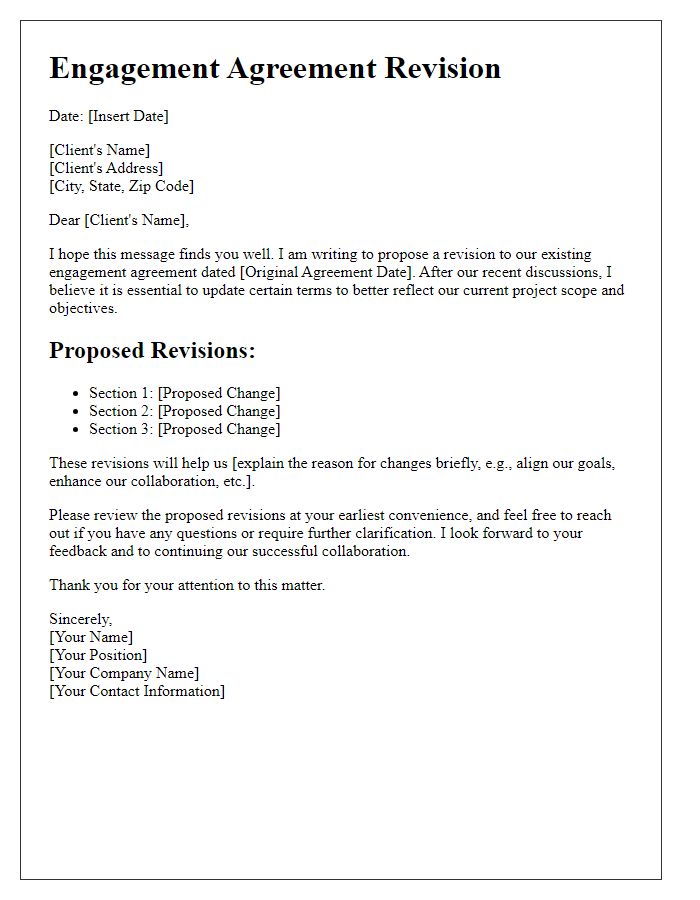
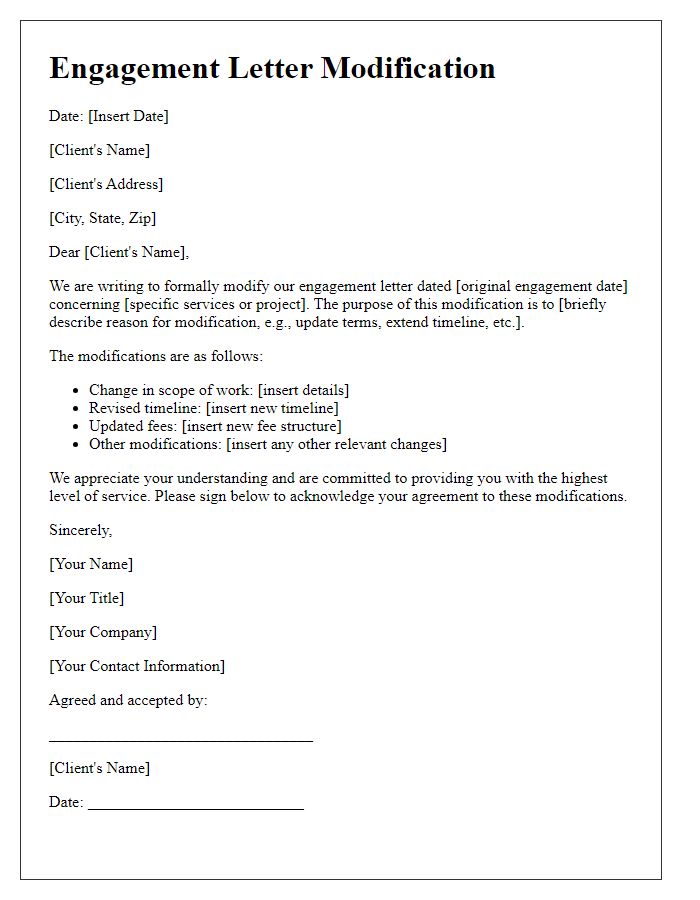
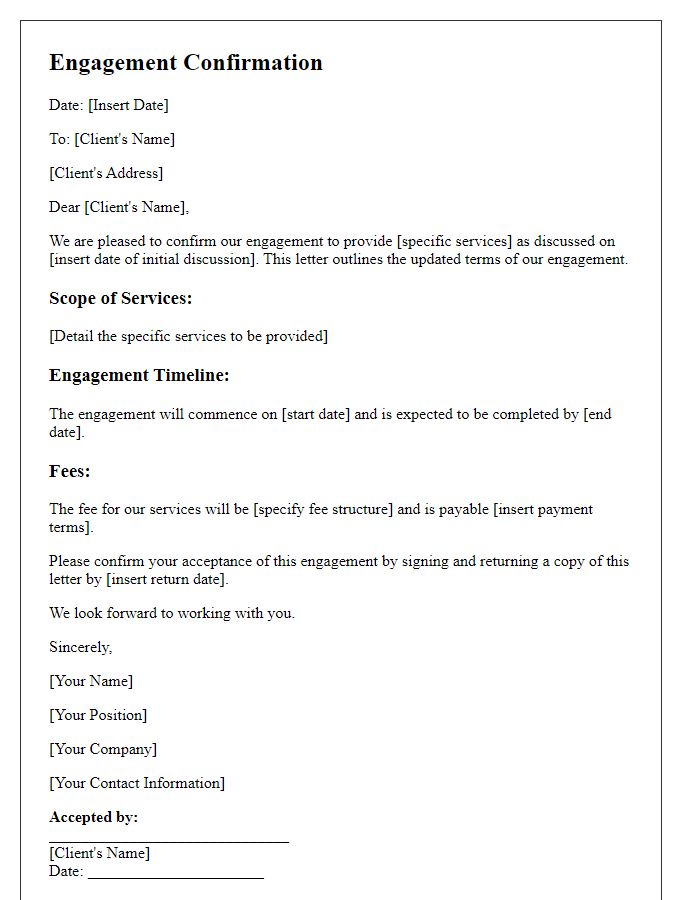
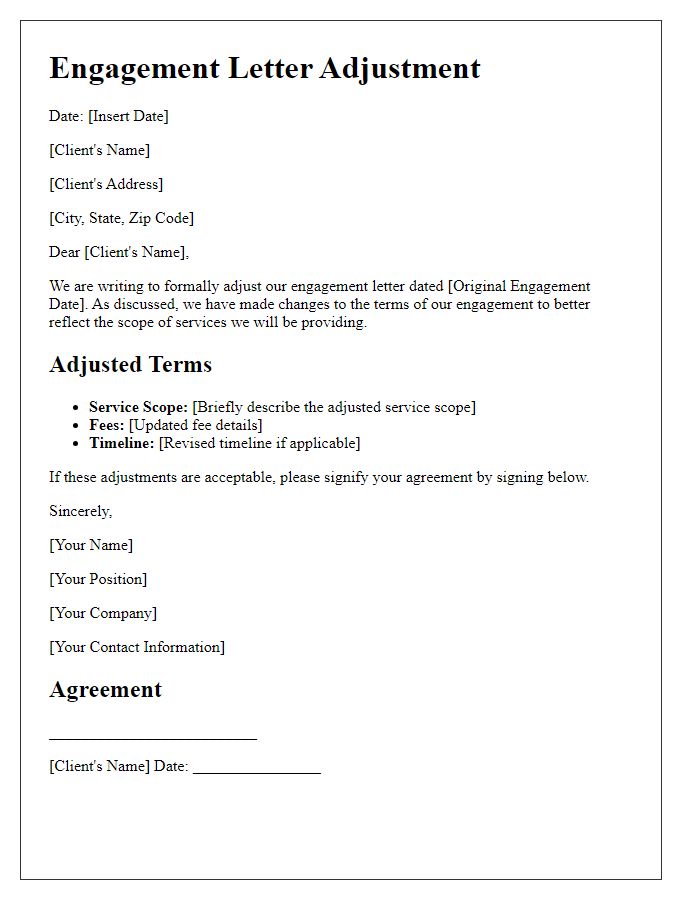
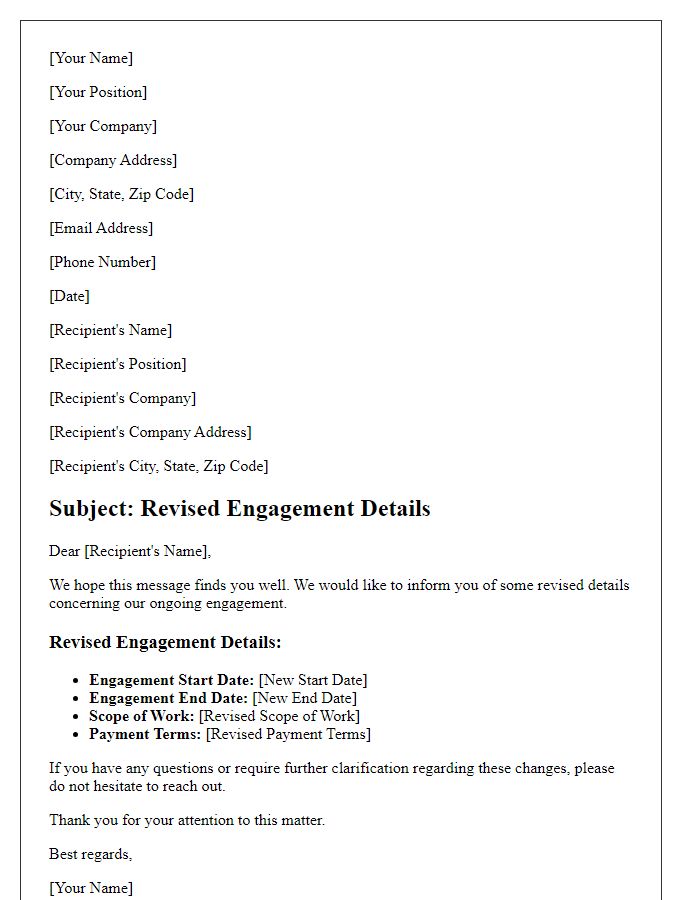
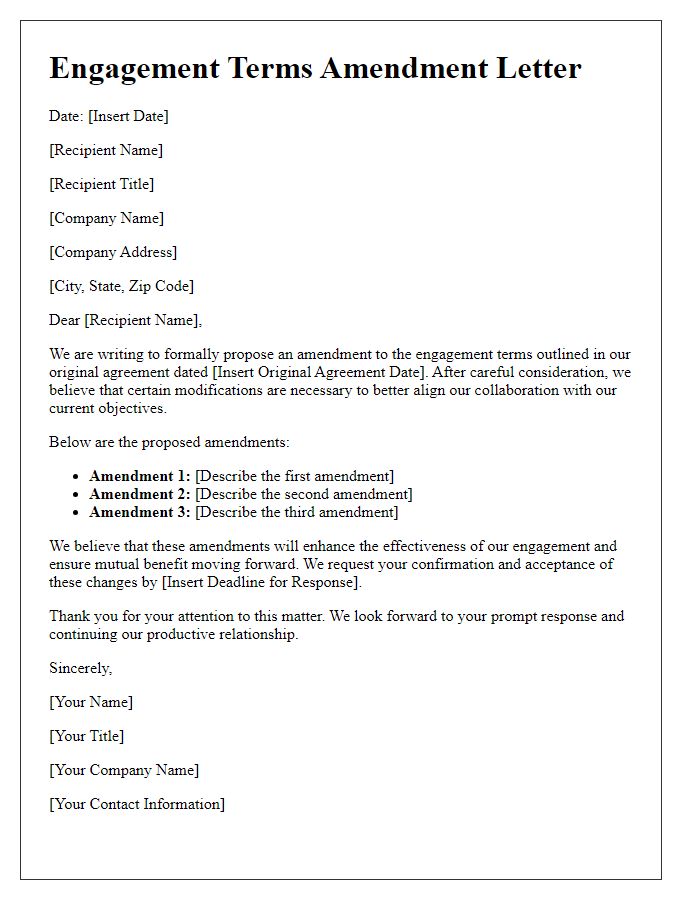
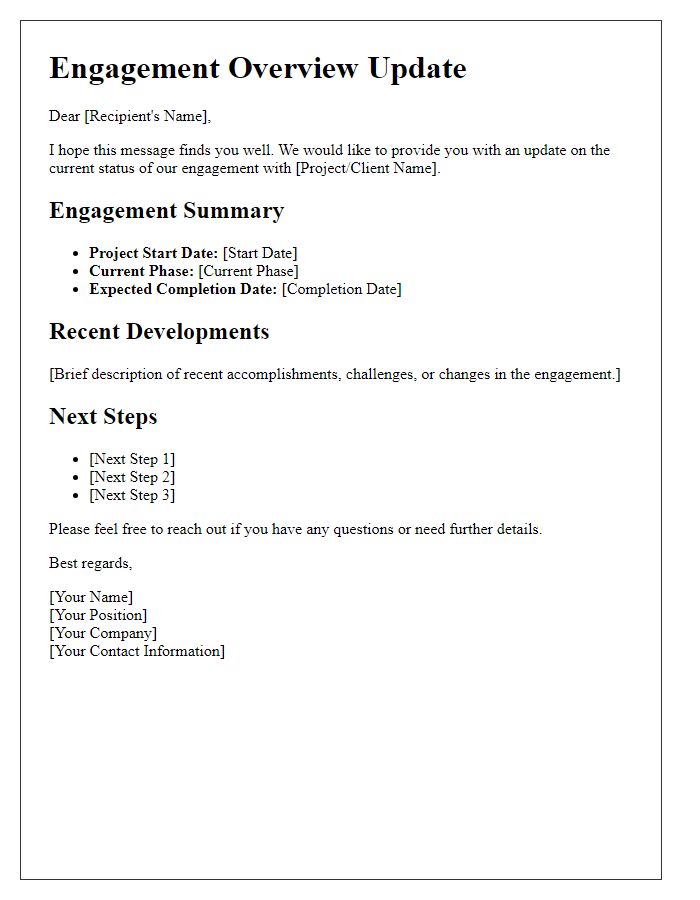
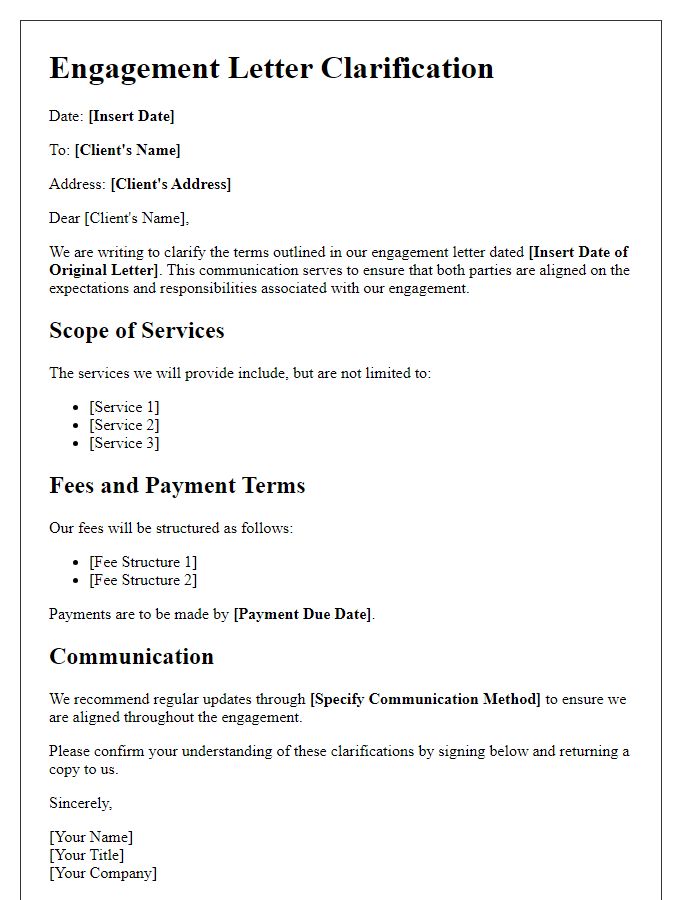
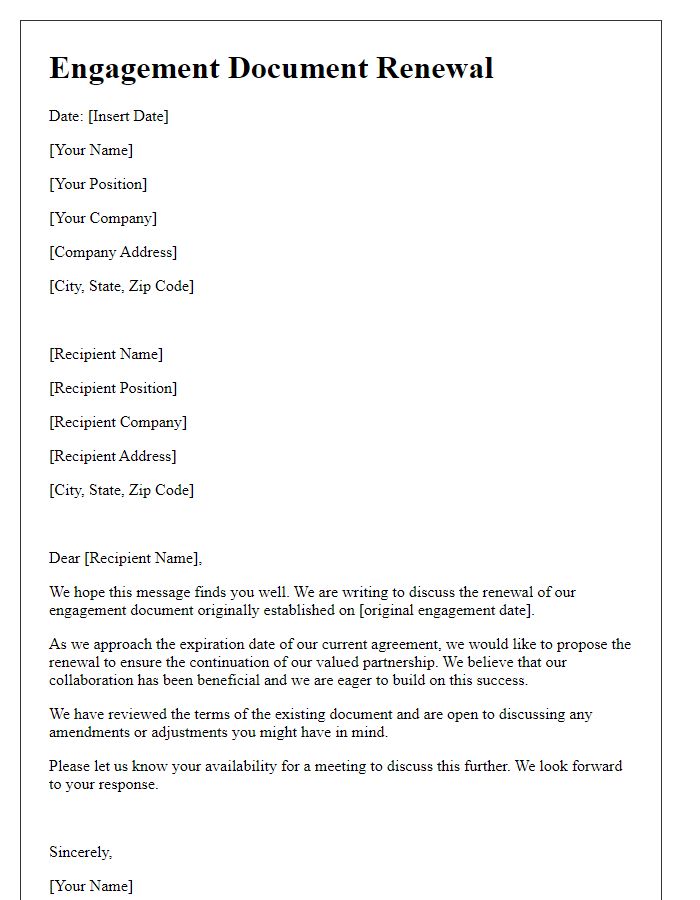
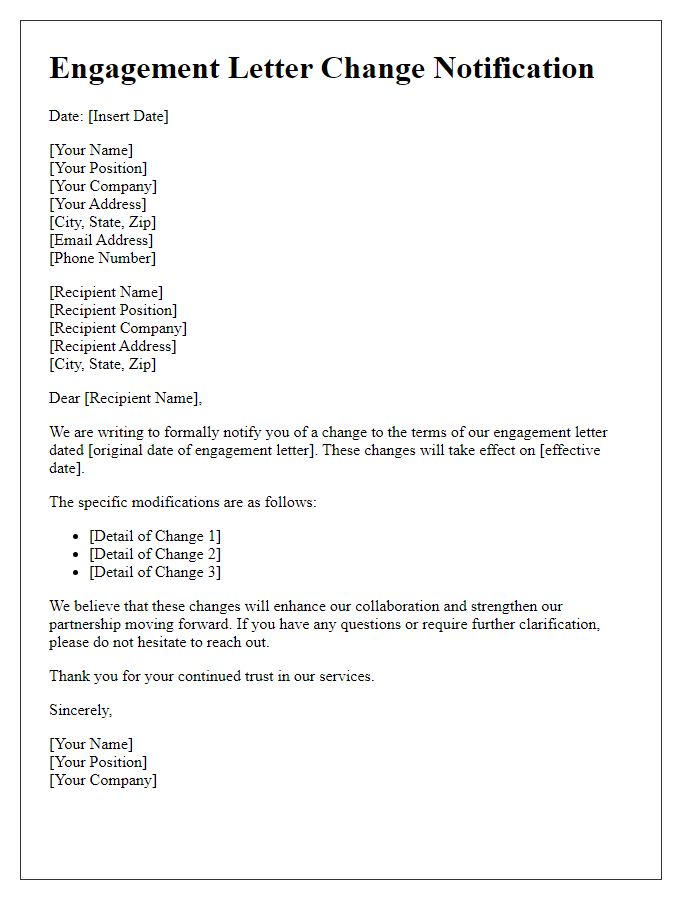

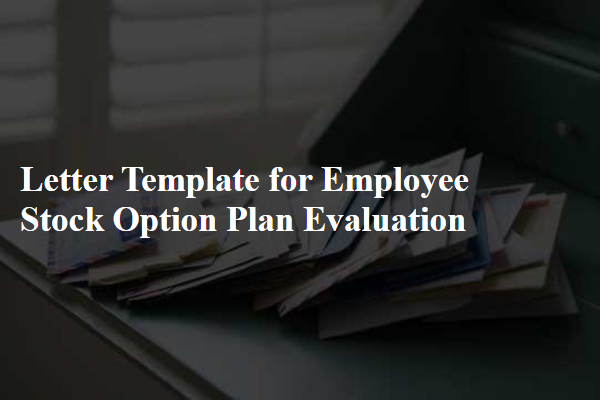
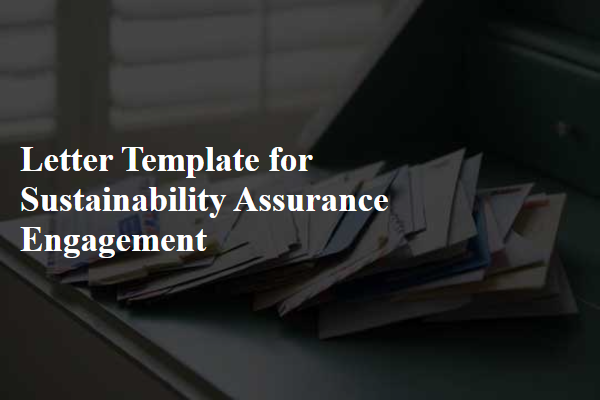
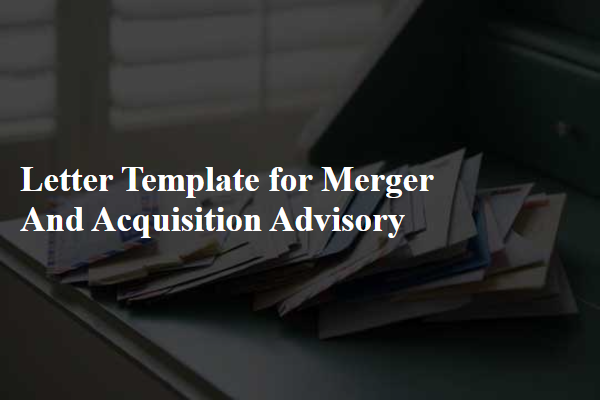

Comments